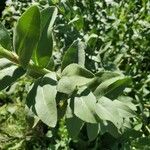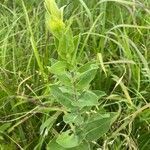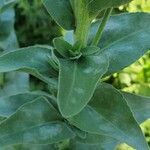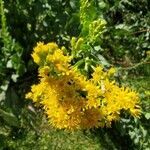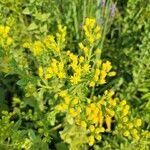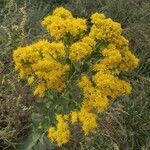Plants 2.5–15 dm from a stout branched caudex; herbage densely pubescent with short spreading hairs, varying to subglabrous; lvs basally disposed, firm, slightly toothed or entire, the larger ones with elliptic, elliptic-oblong, or broadly lanceolate to broadly ovate, rounded to acutish blade 6–25× 2–10 cm, often exceeded by the long petiole; middle cauline lvs sessile or nearly so, 2–6 times as long as wide; infl dense, corymbiform, 5–25 cm wide; heads relatively large, the disk 5–10 mm wide; invol 5–9 mm, glabrous or puberulent, its bracts firm, broadly rounded, conspicuously striate; rays 7–14, 3–5 mm; disk-fls 17–35; achenes turgid or angular, 10–20-nerved; 2n=18, 36. Prairies and other dry, open places, especially in sandy soil; R.I., Conn., w. Mass., and N.Y. to Ga., w. to Alta. and N.M., more common westward. (Oligoneuron r.) Three vars.
